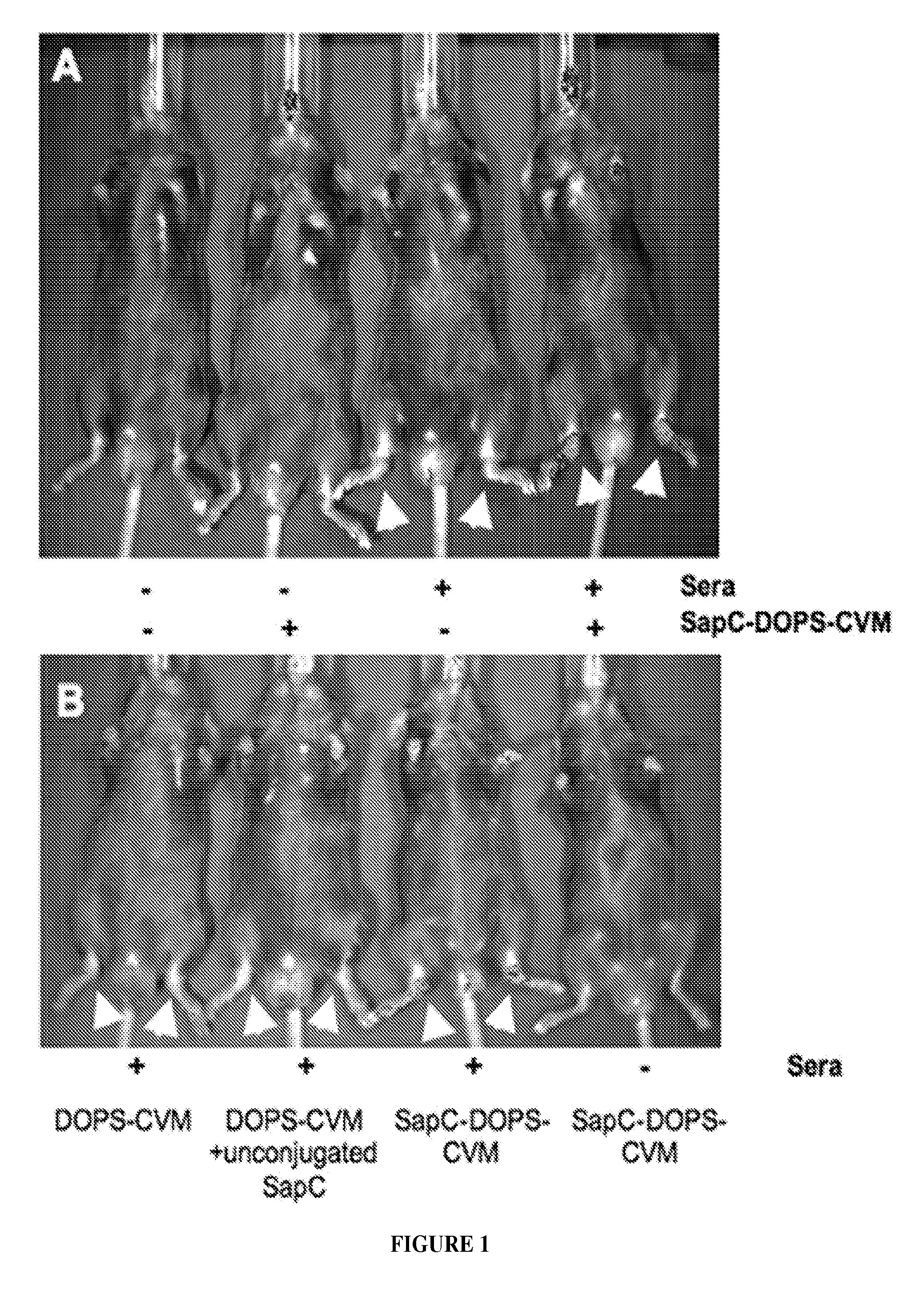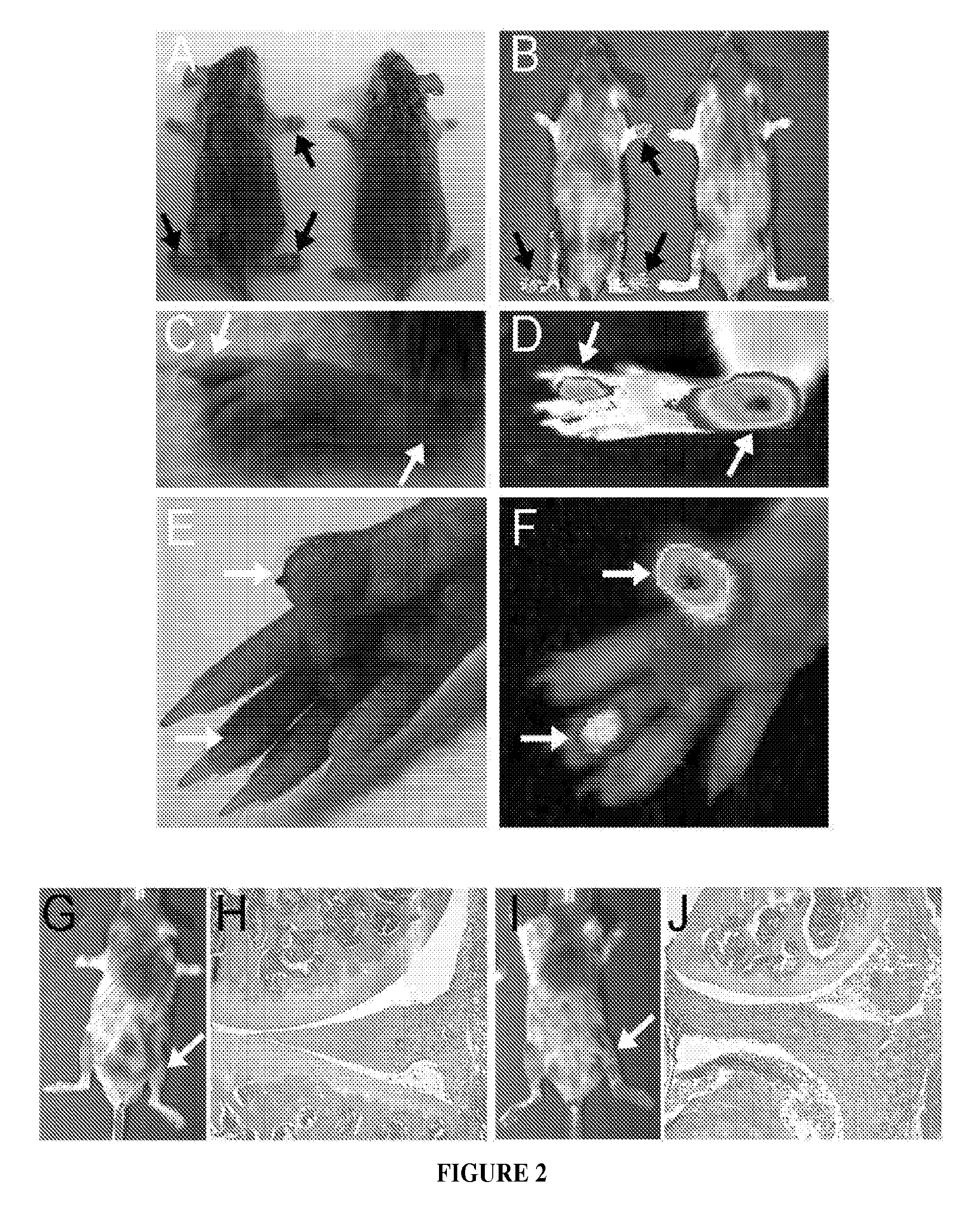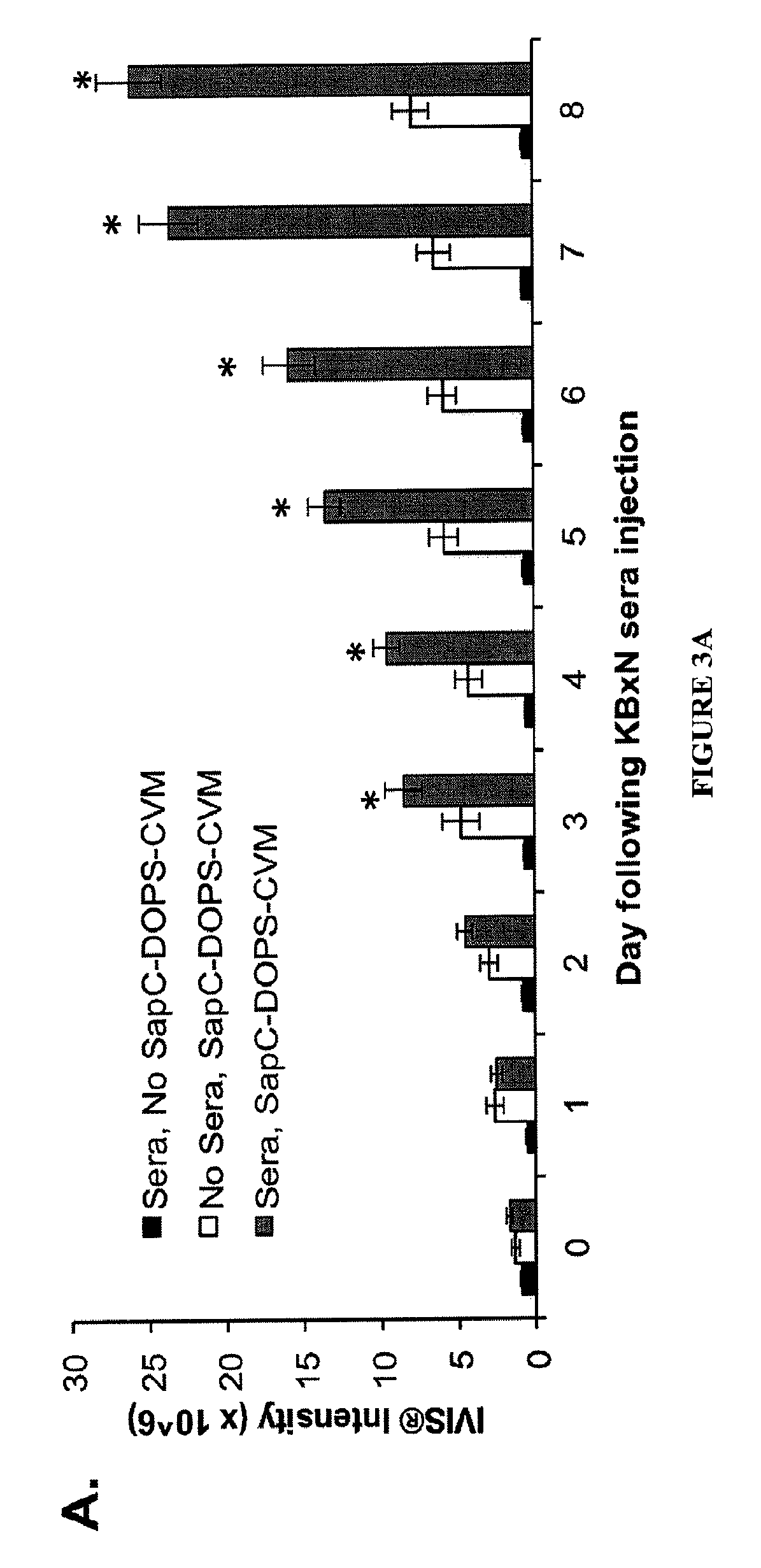Method for imaging a site of arthritis in an animal
imaging technology, applied in the field of imaging a site of arthritis in an animal, can solve the problems of reducing quality of life, severe pain, loss of joint function, etc., and achieve the effect of high fusogenic affinity, detection and evaluation
- Summary
- Abstract
- Description
- Claims
- Application Information
AI Technical Summary
Benefits of technology
Problems solved by technology
Method used
Image
Examples
example 1
K / B×N Arthritis Model
[0197]Sera can be collected from KRN×NOD F1 mice, and 150 μl sera can be given by intraperitoneal injection to C57Bl / 6J mice at day 0 of disease. Calipers can be used to measure paw thickness and ankle thickness in the mice. For ankle thickness, the elliptical area of mouse ankles can be calculated using internalleolar measurements and measurement of the area between the dorsal talus and calcaneus. In this arthritis model, 100% penetrance is normally observed, with animal hind paws being the most highly affected.
example 2
Collagen-Induced Arthritis (CIA) Model
[0198]DBA / 1J male mice (eight weeks of age) can be injected intradermally at the base of the tail with 100 μg of bovine type II collagen (CII) (Elastin Products Co., Inc.) in complete Freund's adjuvant (CFA) on day 1. The mice can be given a similar challenge on day 21 following the initial CII injection. Mice can be evaluated for macroscopic arthritis using an arthritic index macroscopic scoring system ranging from 0 to 4 (0=no detectable arthritis, 1=swelling and / or redness of paw or one digit, 2=two joints involved, 3=three joints involved and 4=severe arthritis of the entire paw and digit). Compared to the K / B×N arthritis model, between 70-100% of mice in the CIA model develop overt arthritic disease and various joints will display arthritic disease.
example 3
Imaging of Nanoparticles Labeled with CVM Using IVIS®
[0199]An aliquot of CellVue® Maroon (CVM, Molecular Targeting Technologies Inc., West Chester, Pa.) in ethanol can be mixed with phospholipid solvent for bath sonication preparation by the procedure as previously described (see Kaimal V et al., “Saposin C Coupled Lipid Nanovesicles Enable Cancer-Selective Optical and Magnetic Resonance Imaging,” Mol Imaging Biol (2010) and Qi X, “Cancer-selective targeting and cytotoxicity by liposomal-coupled lysosomal saposin C protein,” Clin Cancer Res, 15: 5840-5851 (2009). Nanovesicles labeled with CVM can be separated from free CVM dye using a Sephadex™ G25 column (PD-10, Amersham Pharmacia Biotech, Piscataway, N.J.). Nanovesicles labeled with CVM (SapC=4.2 mg / kg, DOPS=2 mg / kg, CVM=6 μmol) and control agents can be administered to mice i.p or via tail vein injection in a volume of 200 μL. Real-time live images can be taken using an IVIS 200 Series imaging system with an XFO-6 fluorescent kit...
PUM
| Property | Measurement | Unit |
|---|---|---|
| wavelength range | aaaaa | aaaaa |
| wavelength | aaaaa | aaaaa |
| diameter | aaaaa | aaaaa |
Abstract
Description
Claims
Application Information
 Login to View More
Login to View More - R&D
- Intellectual Property
- Life Sciences
- Materials
- Tech Scout
- Unparalleled Data Quality
- Higher Quality Content
- 60% Fewer Hallucinations
Browse by: Latest US Patents, China's latest patents, Technical Efficacy Thesaurus, Application Domain, Technology Topic, Popular Technical Reports.
© 2025 PatSnap. All rights reserved.Legal|Privacy policy|Modern Slavery Act Transparency Statement|Sitemap|About US| Contact US: help@patsnap.com



